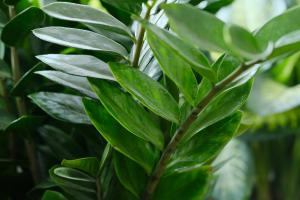Introduction
Water is an essential element for plants. It is necessary for their growth, development and survival. Plants require water for photosynthesis, transportation of nutrients and removal of waste products. However, not all water is equal when it comes to plant growth. Tap water and distilled water differ in their chemical composition, and this can affect plant growth in different ways. This article explores the differences between tap water and distilled water for plants.
TDS Levels in Tap Water Vs. Distilled Water
Total dissolved solids (TDS) levels are a measure of the concentration of chemical substances in water. Minerals and other substances can increase TDS levels, which can affect plant growth. Tap water typically has a higher TDS level due to the presence of minerals, chlorine and other chemicals. Distilled water, on the other hand, has a much lower TDS level as it has been stripped of all minerals and chemicals. While tap water may supply some necessary nutrients to plants, distilled water can help avoid overwhelming them with unwanted substances.
pH Levels in Tap Water Vs. Distilled Water
pH is a measure of the acidity or alkalinity of a solution. It is an important factor in plant growth as different plants thrive at different pH levels. Tap water can have a pH of 7 or slightly above due to the presence of minerals such as calcium and magnesium. Distilled water, on the other hand, has a neutral or near-neutral pH level, which can make it more suitable for plants that prefer a more neutral environment. However, it is important to note that adjusting pH levels can be beneficial for certain plants, and this can be done using tap water.
Minerals and Nutrients in Tap Water Vs. Distilled Water
Tap water contains minerals and nutrients that are essential for plant growth. These include calcium, magnesium, potassium, and phosphorous. However, tap water can often contain varying levels of these minerals which can be influenced by the location it is sourced from. Distilled water, on the other hand, is purified and contains none of these essential minerals, which can be a disadvantage if plants are completely depended on it for growth. If distilled water is used frequently, it might be necessary to add supplements to provide necessary nutrients for plants.
Pesticides and Chlorine in Tap Water Vs. Distilled Water
Tap water can contain pesticides, chlorine, and other chemicals that can be harmful to plants. While these chemicals are typically present in low concentrations, they can have negative effects on plant growth. Distilled water eliminates these harmful chemicals, providing a safe option for plants. However, it is important to note that adding tap water to the soil can still introduce these harmful chemicals to the roots of the plants, especially if the soil was treated with chemicals or fertilizers.
Conclusion
Overall, the type of water you choose to use for your plants should depend on various factors, such as the needs of the plants, location and availability of distilled water. While distilled water may provide a safe option for plants, it is not always the best option for plant growth as it is missing necessary minerals and nutrients. Therefore, it might be beneficial to use a combination of both distilled and tap water to meet the plant’s growth requirements.

 how many times do yo...
how many times do yo... how many planted tre...
how many planted tre... how many pine trees ...
how many pine trees ... how many pecan trees...
how many pecan trees... how many plants comp...
how many plants comp... how many plants can ...
how many plants can ... how many plants and ...
how many plants and ... how many pepper plan...
how many pepper plan...































